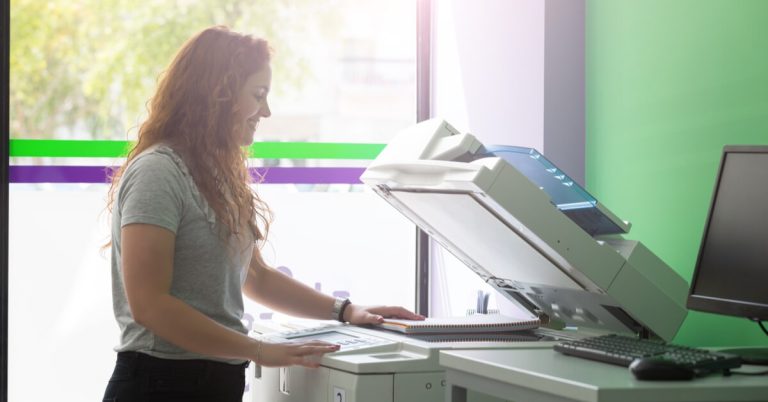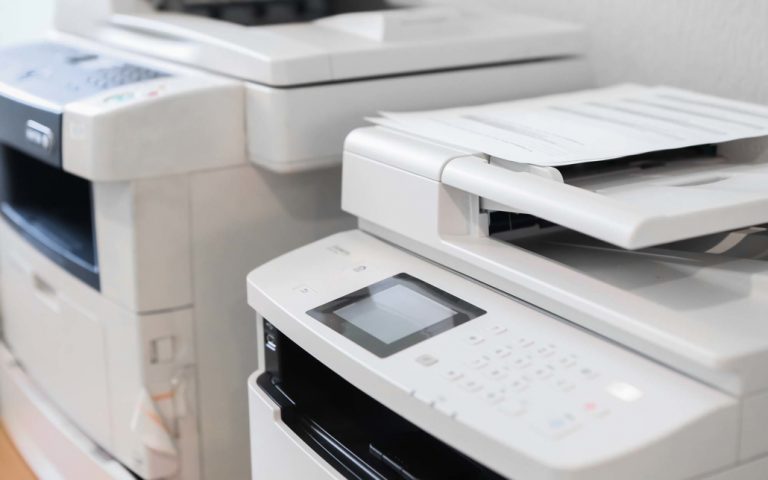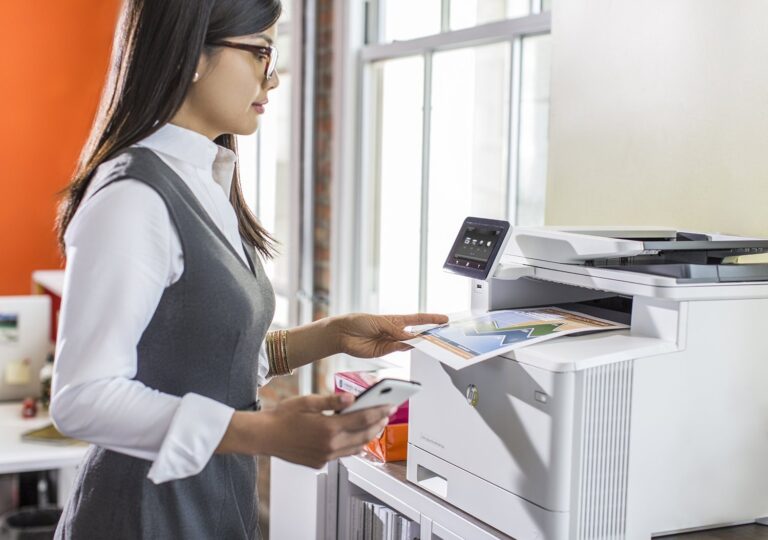Printer Firmware and Software Upgrades: A Guide to Maintenance
Printers have a core software called firmware that controls the hardware functions. It resides in the printer’s programmable memory, acting as the bridge between the physical hardware and the operating system’s printer driver. As your printer ages, this firmware and other associated software require regular updates and upgrades.
Manufacturers frequently release new firmware models to fix issues, enhance performance, and add new features. Understanding when and how to perform these updates is vital for maintaining office productivity.
Should You Upgrade Your Printer’s Firmware?
The common adage, “You don’t need to fix something that is not broken,” often applies to printer firmware. However, there are compelling reasons to consider an upgrade:
| Consideration | Rationale |
| Fixing Existing Problems | If your printer is experiencing problems (e.g., connectivity loss, sudden slowdowns, or inconsistent print quality), a firmware update could be the precise solution, as new models often contain bug fixes. |
| Enhancing Performance | Upgrades can optimize the printer’s overall performance, speed, and efficiency, especially in tasks like connecting to the network or completing large print jobs. |
| Adding New Features | If your printer has the hardware capabilities, a firmware or software upgrade can unlock new features that were not available when you first purchased the machine. |
| Security | Updates are crucial for adding new security patches that protect your network (see details below). |
How to Upgrade Your Printer Firmware (Step-by-Step)
For starters, upgrading your printer may be confusing. The process requires you to know your current software version and locate the corresponding file on the manufacturer’s website.
1. Preparation
- Check Current Version: Locate the configuration sheet or internal settings menu of your printer to find the current firmware version information.
- Search Manufacturer’s Site: Use the version information to search the manufacturer’s website for the correct upgrade file for your specific printer model.
- Download: Download the file to your computer or laptop.
2. Installation Methods
| Method | Best Suited For | Process |
| 1. USB/Direct Connection | Printers without constant internet connectivity. | Send the downloaded file to the printer via the USB port when the printer is in “ready” mode. Some manufacturers provide a User Interface (UI) that guides you. |
| 2. Network/Server Connection | Computers attached to an active internet connection or a central print server. | Connect the printer to the server; it may automatically handle the update, or you may send the upgrade file over dedicated FTP channels. |
3. Verification
Once the upgrade is complete, check the printer for errors. It should print without issues if the upgrade was successful. If problems persist, you may need to revert the printer to the previous software version.
Key Reasons to Upgrade Your Printer (Hardware)
If regular software updates aren’t enough, replacing or upgrading the printer hardware itself may be necessary. An outdated printer can negatively impact your business productivity.
| Reason | Impact on Business |
| Promoting Productivity | When you notice slowing down (taking longer to start up, connect, or complete a job), it is time for an upgrade. This directly slows down progress and efficiency in the workplace. |
| Reducing Maintenance Costs | As your printer gets older, it requires maintenance more frequently. Upgrading means fewer minor malfunctions and less time lost waiting for repairs, saving you time and money. |
| Improving Security | Printers connected through a network can provide an unsecured entrance into your confidential business data. Upgrading your printer ensures you get the latest security features and protection against security breaches. |
| Supporting Business Growth | Growing businesses add more employees, requiring the printer to work harder. An upgraded printer has the robust features needed to meet increased demands and deadlines, often refreshing the machine and clearing unnecessary data. |
Upgrading your printer, whether through firmware or replacing the hardware, may not always feel urgent, but it is necessary. The machine is vital to the company’s productivity, so keeping it optimized is always the best strategy.
Would you like me to find the latest information on specific printer security features that new firmware updates typically include?
🔒 The Essential Role of Printer Firmware in Business Security
Firmware is the internal software that dictates how your printer works. Because modern printers and Multifunction Devices (MFDs) are connected to your network, they are considered network endpoints and represent a potential entry point for cyberattacks if left unsecured.
Upgrading your printer’s firmware is one of the simplest yet most overlooked ways to protect your business from evolving cyber threats.
5 Critical Security Features Addressed by Firmware Updates
When manufacturers release firmware updates, a primary goal is to close security vulnerabilities that hackers can exploit to gain unauthorized access, steal data, or disrupt your network.
| Security Feature | How Firmware Updates Protect Your Business |
| 1. Secure Booting & Firmware Protection | Updates ensure that only authorized, verified firmware can run on the device. They safeguard the printer from potential malware attacks by detecting and preventing any attempt to tamper with or modify the firmware. |
| 2. Data Encryption | New firmware often enhances or enforces encryption for data both at rest (temporarily stored on the printer’s internal drive) and in transit (the print job sent over the network). This scrambles sensitive data, making it unreadable to unauthorized parties. |
| 3. Access Control & Authentication | Updates patch vulnerabilities related to weak default passwords and open ports. They can enable or enforce stronger user authentication features (like PIN codes, swipe cards, or network login credentials) to restrict access to only authorized personnel. |
| 4. Network Isolation (Firewall) | Firmware updates frequently include security patches that function as a mini-firewall, protecting the printer from unauthorized network access and preventing it from being used as a “bridge” to launch attacks on other devices in your network (like servers or workstations). |
| 5. Secure Printing | Updates ensure compatibility with Secure Printing or Pull Printing solutions, which require a user to authenticate at the device before the document is released. This prevents sensitive documents from being intercepted or falling into the wrong hands in the output tray. |
⚠️ The Danger of Outdated Firmware: An outdated printer is an open door for cyberattacks. Hackers commonly exploit unpatched firmware vulnerabilities to take remote control of the device, install malware in its memory, or intercept sensitive print jobs.
Other Performance and Compatibility Benefits
Beyond security, regular firmware updates also contribute significantly to the printer’s operational health:
- Bug Fixes: Updates correct known issues that cause problems like paper jams, unexpected crashes, color printing problems, or inconsistent print quality.
- Performance Optimization: Firmware updates can optimize internal processes, leading to faster print speeds, better memory usage, and improved efficiency.
- Compatibility: Updates ensure your printer remains compatible with the latest operating systems, mobile devices, and network protocols (e.g., newer Wi-Fi standards or cloud services).
Best Practice: Make sure your IT staff or Managed Print Service (MPS) provider schedules quarterly firmware checks for all network-connected printers. Only download and install updates directly from the official manufacturer’s website.
General Service and Quote Requests
If you plan to get copiers for your office, you can buy copiers or lease copiers. We can give you options for getting the copy machine that you want. You can contact our local copier leasing services department in your location.
For all services, call Clear Choice Technical Services:
- Phone: (913) 203-1300
- For copier leasing, request a quote today.
- For short-term rental inquiries, request a rental quote.
For dedicated Copier Repair Services in Kansas, please visit our Repair Services Website for immediate assistance. Our network is powered by Clear Choice Technical Services.






